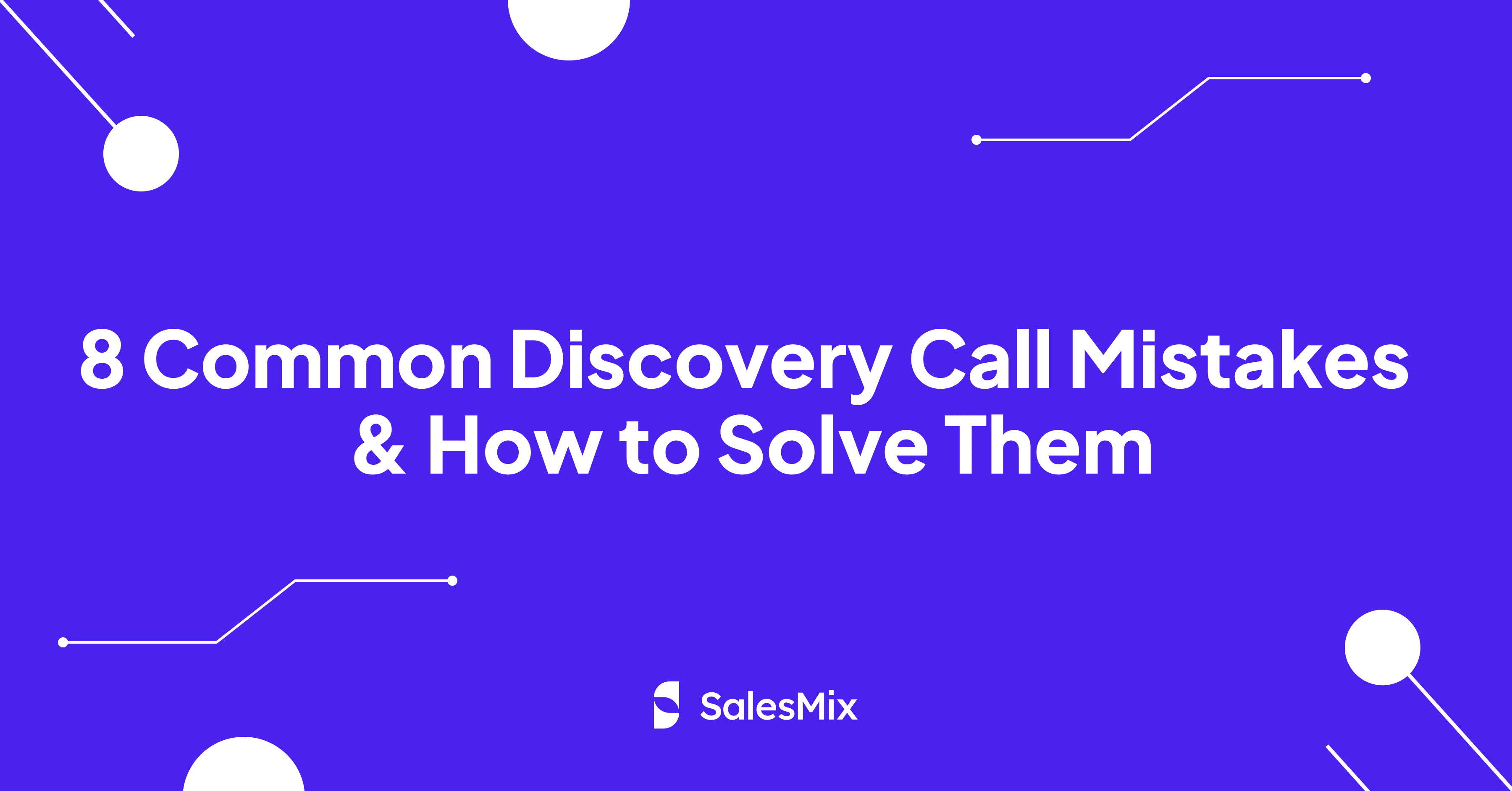Table Of Contents
In a fast-paced business world, knowing your ideal customer can be a game-changer. Creating an Ideal Customer Profile (ICP) helps businesses target the best possible customers for growth. Understanding these key profiles allows companies to focus their marketing and sales efforts more precisely.
An ICP outlines the traits that make up the perfect customer for your business. These traits may include demographics, buying behaviors, and pain points. By focusing on these details, businesses can align their strategies more closely with customer needs, leading to improved engagement and success.
Businesses can benefit from using data analysis and targeted marketing strategies to develop effective ICPs. This approach not only boosts sales but also strengthens customer relationships and enhances market position.
Key Takeaways
- Identify perfect customer traits for targeted efforts.
- Use data analysis to refine customer profiles.
- Align strategies to customer behaviors and needs.
Understanding the Concept of an Ideal Customer Profile (ICP)
An Ideal Customer Profile (ICP) helps businesses focus their marketing efforts on targets that best fit their products or services. Unlike buyer personas, which are more individualized, ICPs focus on broader customer characteristics that can drive business growth and enhance marketing strategy effectiveness.
Defining Ideal Customer Profile and Buyer Persona
An Ideal Customer Profile (ICP) is a detailed description of the perfect customer that would benefit most from a company’s products or services. It includes demographic details, company size, budget, and industry sector. Unlike buyer personas, which are fictional representations of individual buyers based on personal traits, ICPs are focused on company-level data.
Buyer personas, on the other hand, are individual profiles reflecting personal roles and human characteristics. These include age, gender, interests, and pain points. While both help in understanding audiences, ICPs are more strategic as they target businesses or groups rather than individuals, facilitating effective marketing tactics for broader reach.
Using these tools together can lead to more tailored marketing campaigns and sales pitches that address specific needs.
The Importance of ICP in Business Strategy
Integrating an ICP into a business strategy plays a critical role in enhancing efficiency and targeting efforts. By focusing on high-value prospects, businesses can boost conversion rates and reduce marketing waste. An ICP aids in identifying the most promising leads, ensuring resources are directed towards opportunities that have the potential for high returns.
Marketing strategy benefits from ICPs as they streamline approaches, ensuring messages resonate with the right audience segments. This precision in targeting contributes to sustained business growth through enhanced customer acquisition and retention. A well-defined ICP helps businesses adapt to market changes by remaining focused on core customer needs and preferences, thus supporting long-term success.
Analyzing Your Current Customer Base
Analyzing your current customer base is crucial for creating an ideal customer profile. This involves understanding the segments within your customer base, gathering feedback and insights, and integrating information from sales and marketing teams.
Segmentation of Existing Customers
Segmenting existing customers helps identify distinct groups that share similar characteristics. By focusing on demographics, such as age, gender, and income, and firmographics, like industry and company size, businesses can tailor their marketing campaigns more effectively. Behavioral segmentation, which considers purchasing habits and product usage, provides deeper insights into customer preferences. Implementing these approaches allows businesses to craft targeted strategies, optimizing both customer engagement and sales efforts.
Leveraging Customer Feedback and Surveys
Customer feedback provides direct insights into customer satisfaction and needs. Surveys are a powerful method to gather this feedback, offering structured questions that can reveal preferences and issues. Analyzing responses can highlight trends and areas needing improvement. By integrating feedback into business operations, companies can enhance their products and services, ensuring they align with customer expectations. This proactive approach fosters stronger customer relationships and drives loyalty.
The Role of Sales and Marketing Teams in Profiling
Sales and marketing teams play a crucial role in customer profiling. Sales teams interact directly with customers, gathering firsthand data on customer needs and objections. Marketing teams analyze this data to adjust strategies and tailor campaigns. By collaborating, these teams provide a comprehensive view of the customer base. This integration helps refine customer profiles and ensures marketing efforts are both relevant and impactful, aligning with the overall business goals.
Identifying Demographic, Firmographic, and Psychographic Data
Creating an effective Ideal Customer Profile (ICP) requires identifying the different types of data that define your best customers. These include demographic details for individuals, firmographic data for businesses, and psychographic or behavioral attributes related to lifestyles or interests.
Gathering and Analyzing Demographic Information
Demographic data includes age, gender, income, and location. These characteristics help in understanding the individual traits of your customers. For a business selling consumer products, nationality or marital status might be important. Marketers often use surveys, customer feedback, or purchase records to collect this data.
Analytics tools can assist in compiling and visualizing this information. By analyzing patterns within demographic data, businesses can tailor their marketing strategies more effectively to attract similar customers.
Utilizing Firmographic Data for B2B ICPs
For business-to-business (B2B) models, firmographic data is crucial. This includes information like industry type, company size, and revenue. These insights help determine if a company is a suitable target for your services. Companies can obtain this data from business directories or industry reports.
Key benefits include distinguishing potential leads from uninterested companies and prioritizing outreach. Identifying firmographic data allows businesses to focus efforts on prospects that fit their top customer profile.
The Relevance of Psychographic and Behavioral Attributes
Psychographic data goes beyond demographics, capturing elements such as values, interests, and lifestyles. Behavioral attributes focus on how customers interact with your brand—purchase history, usage patterns, and engagement levels with marketing content.
Understanding these attributes helps in predicting future behavior and designing marketing strategies that resonate with customer values. To gather this information, businesses utilize online behavior tracking tools, customer interviews, and social media insights.
Analyzing this data can lead to personalized experiences, driving customer loyalty and satisfaction. By aligning messages with customer beliefs and behaviors, companies create stronger connections with their clients.
Exploring Customer Behavioral Patterns and Pain Points
Understanding customer behaviors and pain points helps businesses create effective sales strategies. These insights guide companies in aligning their offerings with customer expectations and addressing the specific challenges they face.
Mapping the Buying Journey
Mapping the buying journey involves tracking each step a customer takes from awareness to the purchasing decision. Key steps include initial interest, product research, evaluation, and final purchase. This journey provides insight into how customers interact with a brand over time. Identifying popular touchpoints, such as websites, social media, or in-store visits, can highlight where sales strategies might need adjustment.
Businesses must also analyze how different segments move through this journey. Some customers may require more support during certain stages, such as detailed product descriptions or comparison tools. By using these insights, companies can enhance customer experiences and reduce drop-offs during the buying process.
Identifying Common Challenges and Pain Points
Recognizing challenges and pain points involves gathering data from customer interactions, such as support calls or online reviews. Common pain points might include unclear pricing, difficult website navigation, or poor customer service. Addressing these issues can improve satisfaction and encourage repeat business.
Surveys and feedback forms are valuable tools for uncovering specific challenges. Once identified, companies can prioritize solutions, such as simplifying checkout processes or offering more responsive support. By directly addressing these obstacles, businesses can better meet customer needs, leading to increased loyalty and enhanced brand reputation.
Applying Market Research and Analytics
Understanding your market involves both research and analytics to create a solid ideal customer profile. Gathering detailed market data helps in identifying consumer behaviors, while factor analysis identifies trends affecting your business.
Conducting Comprehensive Market Research
Market research involves collecting information about target customers and competitors. This includes demographics, purchasing habits, and preferences. Surveys, interviews, and focus groups are effective ways to gather such data. Analyzing competitors also provides insights into market gaps and opportunities.
Tools like online questionnaires and CRM systems assist in efficient data collection. Qualitative data reveals why customers make decisions, while quantitative data shows patterns and trends.
Utilizing comprehensive market research aids in crafting a detailed customer profile, giving businesses a competitive edge in identifying their ideal customers.
Analyzing Market Conditions and Trends
Understanding market conditions requires monitoring industry trends and economic factors. Data analytics tools help in interpreting this data, identifying patterns, and anticipating changes that may affect business strategies.
Tracking technological advancements and shifts in consumer behavior is crucial. Businesses should continuously update their strategies based on insights gained from data analysis.
Implementing tools like predictive analytics aids in preparing for future market changes. Companies can adjust tactics based on emerging patterns to stay ahead of competitors.
Active monitoring of the market landscape ensures that businesses adapt strategically, enhancing decision-making processes and long-term planning.
Utilizing Account-Based Marketing (ABM) and Personalization
Incorporating Account-Based Marketing (ABM) and personalization into business strategies can enhance engagement with high-value prospects. Understanding and targeting specific accounts allows businesses to tailor their marketing and sales efforts effectively.
Developing Target Account Lists
A well-crafted target account list is essential for successful ABM campaigns. This process begins by identifying accounts that align with the business’s goals. Companies should consider factors like revenue potential, industry influence, and the likelihood of long-term partnerships.
Using advanced analytics tools helps in data-driven decision-making. Teams must collaborate to gather insights from both marketing and sales departments. A cross-functional approach ensures that the most promising accounts are included on the list.
By segmenting accounts based on common characteristics, businesses can focus their efforts more efficiently. This segmentation provides a roadmap for personalized marketing strategies, enabling teams to prioritize resources effectively.
Customizing Marketing & Sales Outreach with ABM
Customizing outreach strategies for each target account increases the likelihood of success. Personalization is key in tailoring messages and content. Businesses should adapt their messaging to address specific pain points and goals of each account.
Leveraging technology like CRM systems can streamline communication efforts. Automated tools allow companies to maintain consistent interactions and monitor engagement.
Moreover, it’s important to involve different stakeholders within the target accounts. By identifying decision-makers and influencers early, businesses can craft messages that resonate deeper. This approach not only improves engagement but also fosters strong relationships, enhancing account retention rates.
Overall, combining ABM with personalization in outreach efforts bridges the gap between marketing and sales, leading to higher conversion rates.
Leveraging Advanced Data Techniques
Businesses in 2025 can benefit greatly from using advanced data techniques. Understanding customer behavior with machine learning and employing the right tech stack for analytics are modern methods for making informed decisions.
Machine Learning for Deep Customer Insights
Machine learning algorithms help businesses uncover deep customer insights by analyzing patterns and trends. These algorithms allow for processing large volumes of data quickly, making it easier to identify customer preferences and purchase behaviors. Using technologies like neural networks and natural language processing, businesses can personalize marketing strategies, resulting in enhanced customer experiences.
Predictive analytics also play a crucial role. They enable organizations to forecast future customer behavior based on past data, assisting in proactive decision-making and strategy development. With these tools, businesses achieve a competitive advantage by meeting customer needs more effectively and efficiently.
Tech Stack and Tools for Advanced Analytics
A robust tech stack is critical for advanced analytics. Key components often include data management platforms, business intelligence tools, and customer relationship management (CRM) software. Platforms like Tableau and Google Analytics offer in-depth data analysis, helping businesses track customer journeys and preferences.
Cloud-based solutions provide scalability for data storage and processing, making it easier for companies to handle growing amounts of data. Integrating advanced analytics tools with existing systems ensures seamless data flow and valuable insights. Selecting the right tech stack helps businesses maintain agility and adapt to evolving market conditions, ensuring they remain at the forefront of customer engagement strategies.
Designing Strategies for Customer Acquisition and Retention
Creating effective strategies for customer acquisition and retention involves understanding your target audience and developing tactics to attract and keep these customers. Utilizing specific sales strategies and implementing retention techniques can significantly boost conversion rates and overall business growth.
Creating Sales Strategies to Attract Ideal Customers
A strong sales strategy is essential for attracting ideal customers. It begins with identifying target customer segments based on detailed personas. These personas should consider demographics, behaviors, and needs. Tailored marketing messages can speak directly to these segments, increasing their engagement.
Leveraging digital channels like social media, email marketing, and search engine optimization helps reach more potential customers. These efforts should be backed by data-driven insights. Techniques such as A/B testing can optimize messaging and impact.
Collaboration between marketing and sales teams ensures cohesion in approach. By aligning these efforts, businesses can create a seamless experience for customers, leading to higher conversion rates. Regular review and adaptation of strategies help maintain relevance and efficiency.
Implementing Techniques for Improving Customer Retention
Customer retention focuses on maintaining a loyal customer base. A successful approach often begins with outstanding customer service and clear communication. Addressing customer feedback and resolving issues quickly enhances satisfaction.
Loyalty programs and personalized offers encourage repeat purchases. Businesses can segment existing customers to provide tailored rewards, making them feel valued. Continuous engagement through newsletters or personalized follow-ups fosters a sense of connection.
Analyzing customer behavior helps identify at-risk customers and take proactive measures to retain them. Gathering insights from data analytics offers a path to develop customized solutions. By investing in long-term relationships, businesses boost not just retention but also lifetime value, enhancing sustained growth.
Evaluating and Refining Your ICP
Evaluating and refining your Ideal Customer Profile (ICP) is an ongoing process essential for staying competitive. This involves analyzing performance data to make necessary adjustments and leveraging customer feedback through interviews and focus groups for continuous improvement.
Review and Adjust ICP Based on Performance Data
Evaluating your ICP should start with analyzing performance metrics like conversion rates. Lower-than-expected rates might signal a mismatch between your customer profile and marketing strategies. Regularly check how well your ideal customer aligns with current data trends by examining sales figures, demographic information, and engagement levels.
A/B testing can provide insights into which segments perform best. Adjusting target attributes based on real-life metrics ensures your profile remains relevant. Software tools that analyze large amounts of data make this process more efficient, identifying patterns that may not be immediately obvious. By doing so, businesses can adapt their ICP for better alignment with market demands.
Continuous Improvement through Customer Interviews and Focus Groups
Gaining qualitative insights is crucial for refining your ICP. Customer interviews and focus groups provide deeper understanding beyond numbers. Listening to what customers value and dislike about your product can reveal areas for improvement that data alone might miss.
These interactions can highlight shifts in consumer preferences or unmet needs. Regularly schedule sessions to explore emerging trends, testing hypotheses derived from performance data. This feedback loop informs which aspects of the ICP require adjustments, ensuring the business stays aligned with customer expectations.
Incorporate feedback effectively by creating a structured plan to integrate insights into your product and marketing strategies. This continuous feedback cycle not only refines the ICP but also fosters stronger customer relationships.
Avoiding Common Mistakes in ICP Creation
Creating an Ideal Customer Profile (ICP) can streamline your business strategies, but common mistakes can hinder your success. Understanding these errors will help you craft a more effective ICP.
Recognizing and Addressing Missteps
Be wary of assuming customer needs without data. Relying too heavily on intuition rather than actual data can lead to inaccurate profiles. Businesses should gather data from multiple sources such as customer feedback, market surveys, and sales records. This provides a concrete basis for your ICP, improving accuracy and efficiency.
Avoid treating ICP as a one-time task. As noted by many experts, the business and market environment change frequently. Regular updates are necessary to keep your ICP relevant. This involves revisiting customer attributes and adapting to shifts in market trends.
Don’t confuse ICPs with buyer personas. These two are different tools. An ICP focuses on ideal company traits that match your offerings, whereas buyer personas center on specific individuals and their roles. Ensuring clarity between these concepts allows your team to focus marketing efforts more strategically.
Over-relying on internal opinions can be a mistake. While insights from your team are valuable, it’s crucial to incorporate external data. Expanding your research to learn from outside sources helps balance internal biases and injects fresh perspectives into your ICP development process.
Frequently Asked Questions
An Ideal Customer Profile (ICP) is crucial for tailoring your marketing and sales efforts. Understanding key components, differentiating between an ICP and a buyer persona, and using strategies for niche markets are vital to leveraging ICPs effectively.
What essential elements should be included in an ideal customer profile template?
An ideal customer profile template should include demographic information, needs, pain points, and buying behaviors. Additionally, understanding the customer’s goals and challenges can create a more complete picture. Utilizing a scorecard can measure the fit of potential customers against your ideal profile, offering structured insights into your target audience.
Can you provide examples of effective ideal customer profiles in a B2C context?
In a B2C context, effective profiles often focus on lifestyle preferences, spending habits, and preferred communication channels. For instance, a fitness brand might profile customers who value health and convenience, frequent gyms, and engage with health-related content online. These insights help tailor products and marketing strategies effectively.
How does an ideal customer profile differ from a buyer persona?
An ideal customer profile is a high-level overview focusing on the most profitable and engaged customer segment. It concentrates on the best-fit demographic and organizational traits. Meanwhile, a buyer persona delves deeper into individual customer behavior, exploring personal motives, decision processes, and specific buying journeys.
What steps are involved in mapping an ideal customer profile for a business?
Mapping an ideal customer profile involves identifying top customers, analyzing sales data, and compiling common traits. Gathering internal and external data helps in pinpointing key demographics and behaviors. Engaging with teams from different departments can refine the profile further, making it a comprehensive tool for business strategies.
What are the different approaches to customer profiling, and how do they impact the creation of an ideal customer profile?
Different approaches, like demographic, psychographic, and behavioral profiling, target various aspects of customer behavior and preferences. These methods affect how businesses perceive customer needs, influencing marketing strategies. A multi-faceted approach, using multiple profiling types, often leads to a more well-rounded ideal customer profile.
What strategies can be used to determine the ideal client profile for a niche market?
In niche markets, strategies such as focusing on specific buyer pain points and leveraging industry-specific data are crucial. Engaging with existing customers through interviews or surveys can provide valuable insights. Networking within the niche community also helps in gathering firsthand information, refining the target profile for specialized offerings.






